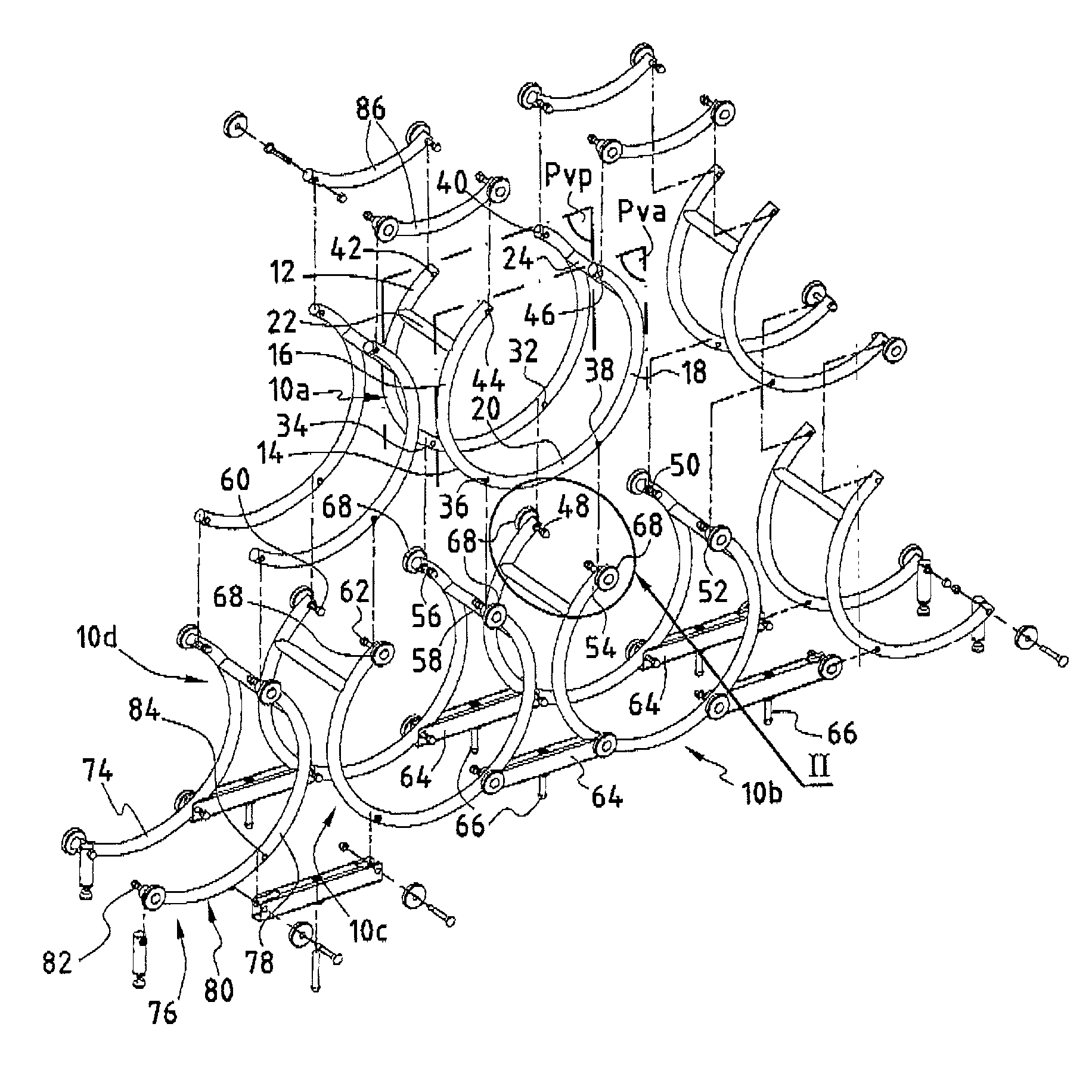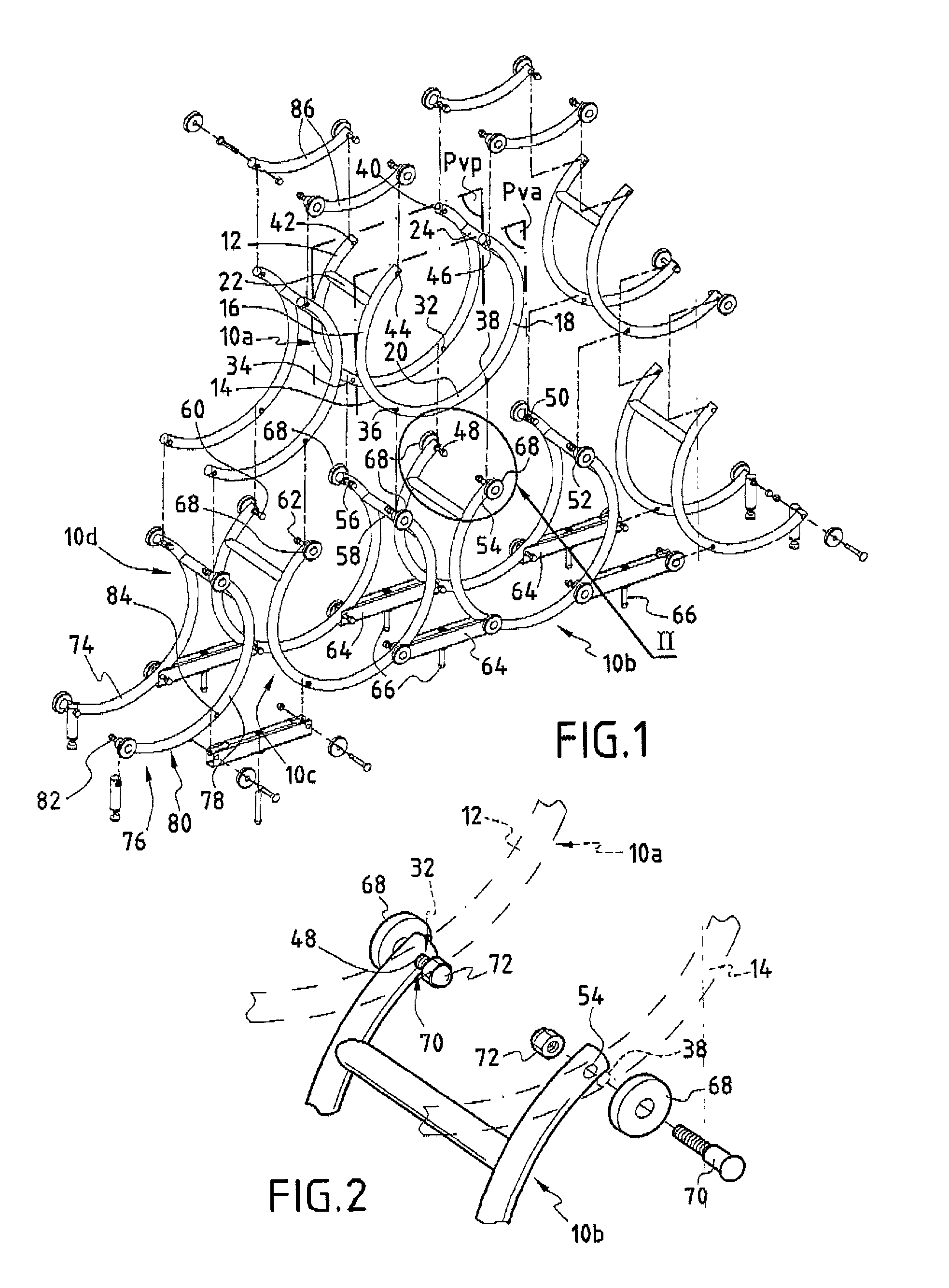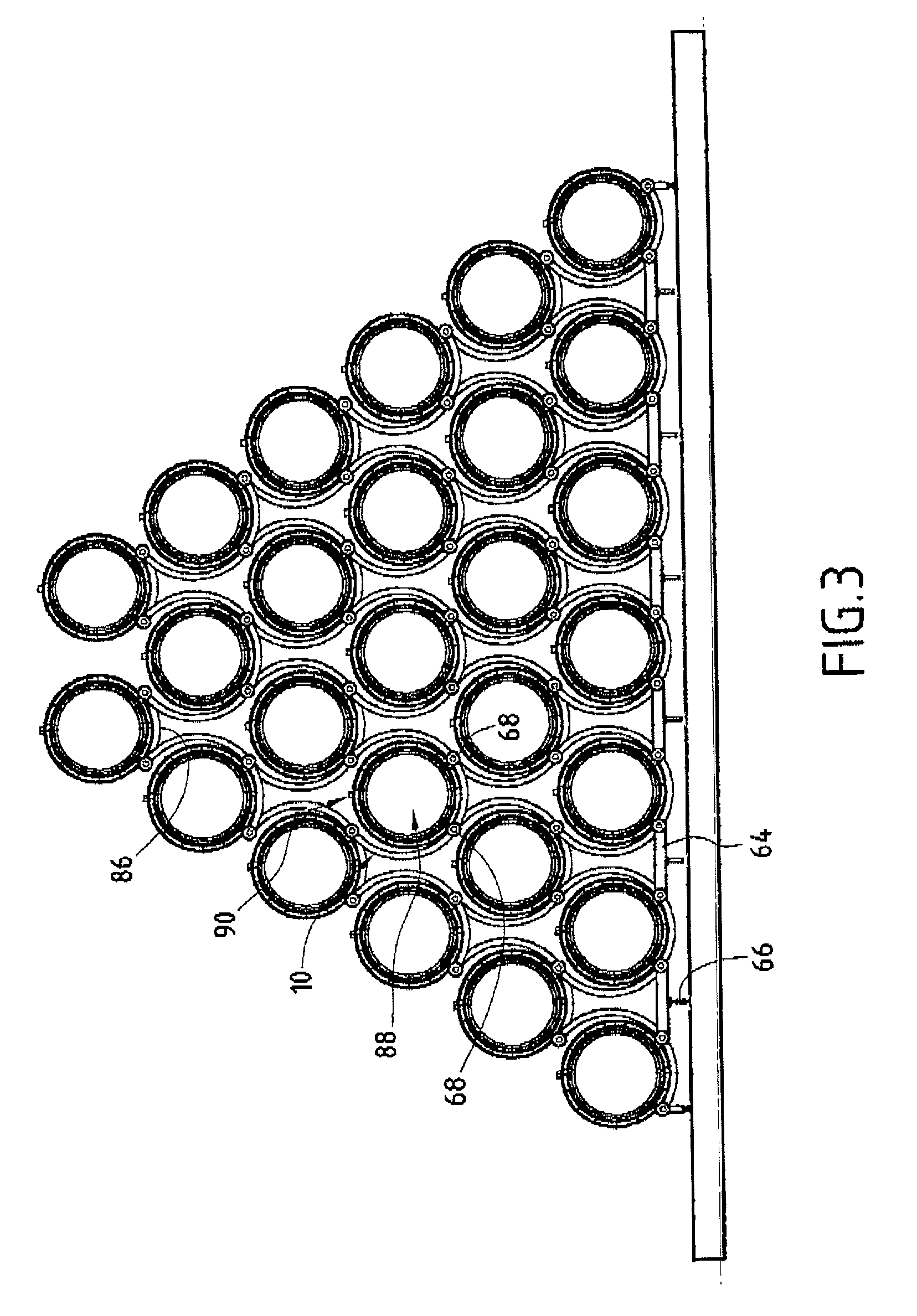Rack for supporting circularly symmetrical containers
a technology for supporting containers and containers, applied in the field of supporting containers, can solve the problems of reducing the number of rows that can be superposed, and affecting the accuracy of storing circularly symmetrical containers in that way, so as to achieve the effect of reducing the modular structure, preventing rotation, and being easy to assembl
- Summary
- Abstract
- Description
- Claims
- Application Information
AI Technical Summary
Benefits of technology
Problems solved by technology
Method used
Image
Examples
Embodiment Construction
[0036] Reference is made initially to FIG. 1 for a general description of the component elements of the invention and how they are arranged.
[0037] Each modular structure 10 comprises two identical structure elements: a back structure element 12; and a front structure element 14 facing each other and respectively defining a back vertical mean plane Pvp and a front vertical mean plane Pva, which planes are referenced in FIG. 1 for one particular modular structure 10a, the two planes Pvp and Pva being substantially parallel to each other.
[0038] Each structure element comprises two identical vertical arcs 16 and 18 that face each other, with their bottom ends being interconnected by a link arc 20. The arcs 16, 18, and 20 are concave towards the inside. For practical reasons, the structure elements are made as single pieces by curving a tubular section member to form a portion of a hoop.
[0039] The structure elements 12 and 14 are mechanically interconnected near the top by identical link...
PUM
 Login to View More
Login to View More Abstract
Description
Claims
Application Information
 Login to View More
Login to View More - R&D
- Intellectual Property
- Life Sciences
- Materials
- Tech Scout
- Unparalleled Data Quality
- Higher Quality Content
- 60% Fewer Hallucinations
Browse by: Latest US Patents, China's latest patents, Technical Efficacy Thesaurus, Application Domain, Technology Topic, Popular Technical Reports.
© 2025 PatSnap. All rights reserved.Legal|Privacy policy|Modern Slavery Act Transparency Statement|Sitemap|About US| Contact US: help@patsnap.com



